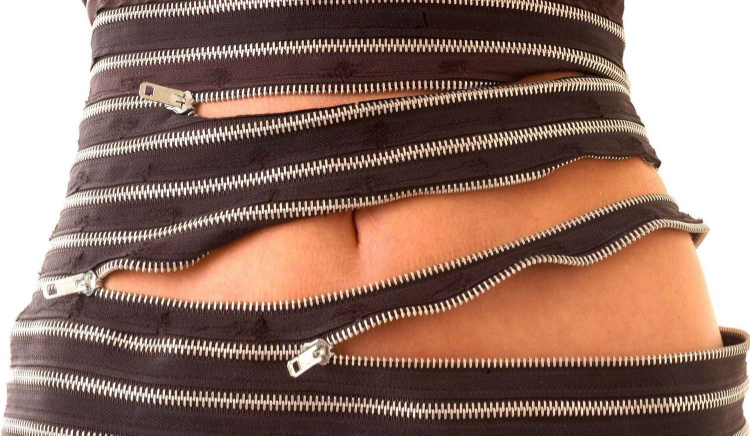Dress Made of 120 Zippers

This convertible dress design by Sebastian Errazuriz is nothing short of stunning in any of its possible stylistic configurations. The wearer can simply zip and unzip along any of the horizontal zipper lines to convert their clothing in a matter of seconds.
What might be most remarkable about this design is how quickly it can shift from elegant to sexy, a full-length, single-piece dress one could potentially wear to work into a skimpy, short-cut, two-piece number that could put some bikinis to shame. In between there are any number of other options for shortening the top or bottom or even leaving some zippers partly on and partly off.
Despite the obvious benefits in terms of variable style, temperature and so on there are some clear drawbacks to this design as well. How much cold metal can you, after all, take on your skin? And do you really want to give any passerby 120 ways to undress you in the blink of an eye? These exceptions aside the idea is incredibly innovative and has all kind of potential – if the kinks can be worked out.
“The dress was influenced by the constant changes and demands that fashion establishes every season. The idea was to create a single dress that could easily be reconstructed over and over again to comply with hundreds of variations. The zipper dress can be adapted from a full-length night dress, to a T-shirt, a miniskirt or even a belt.”
“The dress was made with 120 custom made zippers. Each one of them can be either separated from the rest of the dress or open to play and reveal layers or skin beneath. Its author the artist and designer Sebastian ErraZuriz believes the concept is particularly poignant in the current economic crisis; buy one dress, get a hundred different fashion possibilities. The dress is a one of a kind piece, yet could be produced industrially for a relatively accessible price.”
“On one hand the Zipper dress offers its owner the independence to adapt it to their every need, on the other hand, it invites people to re-think fashion and everyday objects.”






